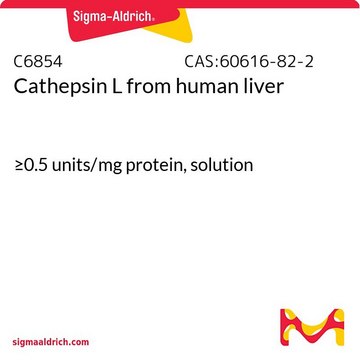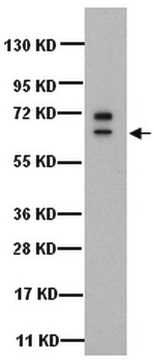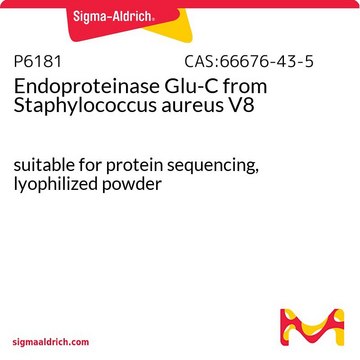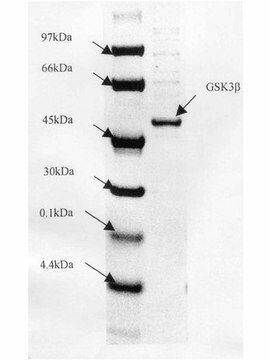219402
Cathepsin L, Human Liver
Cathepsin L, Human Liver, CAS 60616-82-2, is a native, the most potent of all the lysosomal proteinases. Plays a major role in the proteolysis of both cellular and endocytosed macromolecules.
Synonim(y):
CTSL, CTSL1, Główne wydalane białko (MEP), Ludzka katepsyna L
About This Item
Polecane produkty
pochodzenie biologiczne
human liver
Poziom jakości
opis
Merck USA index - 14, 1905
Formularz
liquid
producent / nazwa handlowa
Calbiochem®
warunki przechowywania
OK to freeze
avoid repeated freeze/thaw cycles
metody
activity assay: suitable
przydatność
suitable for molecular biology
Zastosowanie
life science and biopharma
Warunki transportu
wet ice
temp. przechowywania
−70°C
informacje o genach
human ... CTSL(1514)
Opis ogólny
Katepsyna L, ludzka wątroba, natywna, jest najsilniejszą ze wszystkich proteinaz lizosomalnych. Katepsyna L (CTSL) należy do podrodziny papain proteaz cysteinowych i znajduje się głównie w pęcherzykach endolizosomalnych.
Działania biochem./fizjol.
Opakowanie
Ostrzeżenie
Definicja jednostki
Postać fizyczna
Uwaga dotycząca przygotowania
Rekonstytucja
Inne uwagi
Informacje prawne
Kod klasy składowania
12 - Non Combustible Liquids
Klasa zagrożenia wodnego (WGK)
WGK 2
Certyfikaty analizy (CoA)
Poszukaj Certyfikaty analizy (CoA), wpisując numer partii/serii produktów. Numery serii i partii można znaleźć na etykiecie produktu po słowach „seria” lub „partia”.
Masz już ten produkt?
Dokumenty związane z niedawno zakupionymi produktami zostały zamieszczone w Bibliotece dokumentów.
Nasz zespół naukowców ma doświadczenie we wszystkich obszarach badań, w tym w naukach przyrodniczych, materiałoznawstwie, syntezie chemicznej, chromatografii, analityce i wielu innych dziedzinach.
Skontaktuj się z zespołem ds. pomocy technicznej








